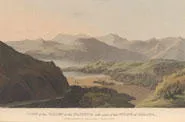
The collection largely comprises pre-1850 books which do not fall within another named collection. The material is wide in subject scope covering history, literature, music and sciences. The collection is partly catalogued.
Using Library Search
Records from all collections are available through King's Library Search.
Being signed in to Library Search gives the best functionality for searching and the homepage gives advice on how to narrow down your searches by using scopes and by filtering searches you have made. For full instructions please see both the Library Search homepage and also our 'Catalogues' webpage, available by scrolling down to the menu on the Special Collections homepage.
Using scopes
You can limit your search to Foyle Special Collections Library items by using scopes.
If you select the ‘Library Resources’ scope, only the print and ebooks, audiovisual material and journals held by the campus libraries and Foyle Special Collections Library will be retrieved in your searches
Using filters
For finding material related to specific collections or former owners, use the ‘Library Resources’ scope in the drop down menu and then filter by ‘Former owner’ in the Advanced search criteria to display records from a specific collection.
You can also use the Location drop down menu on the left hand side of the screen to identify items from specific named special collections.
Please do contact us for further advice on identifying material which will assist you with your studies.
Areas of strength include:
- Byzantine and Ottoman studies
- Theology
- Literature
- Travel and voyages of exploration and discovery
- Music
- Science
- Medicine
Byzantine and Ottoman studies
The Rare Books Collection contains rich holdings relating to Byzantine and Ottoman studies, particularly the social and military history of the Ottoman Empire and travel literature relating to the Eastern Mediterranean.
Some examples include Sir Paul Rycaut’s continuation (sixth edition, 1687) of Richard Knolles’ detailed history of the Ottoman Empire, the first English edition (1718) of Joseph Pitton de Tournefort’s classic account of his journey through the Levant (Tournefort was a renowned French botanist and collected copious species of plants during his journey), William Eton’s comprehensive description of Turkish government, military and commerce in his Survey of the Turkish Empire (1799), and Charles MacFarlane’s Constantinople in 1828: a residence of sixteen months in the Turkish capital and provinces (1829), covering the recent political history at that time.
Travel literature for the region is well represented with works by a host of classical scholars, antiquarians, historians and topographers. The collection includes, for example, illustrated accounts by Richard Chandler (1738-1810), Edward Dodwell (1767-1832), Sir William Gell (1777-1836), Sir Henry Holland (1788-1873), Thomas Smart Hughes (1786-1847), Peter Edmund Laurent (1796-1837), William Leake (1777-1860), François Pouqueville (1770-1838), William Turner (1792-1867) and Hugh William Williams (1773-1829). Numerous works include striking coloured plates depicting local dress, customs and topography, for example, The costume of Turkey (1802) and John Cam Hobhouse’s Journey through Albania (1813).